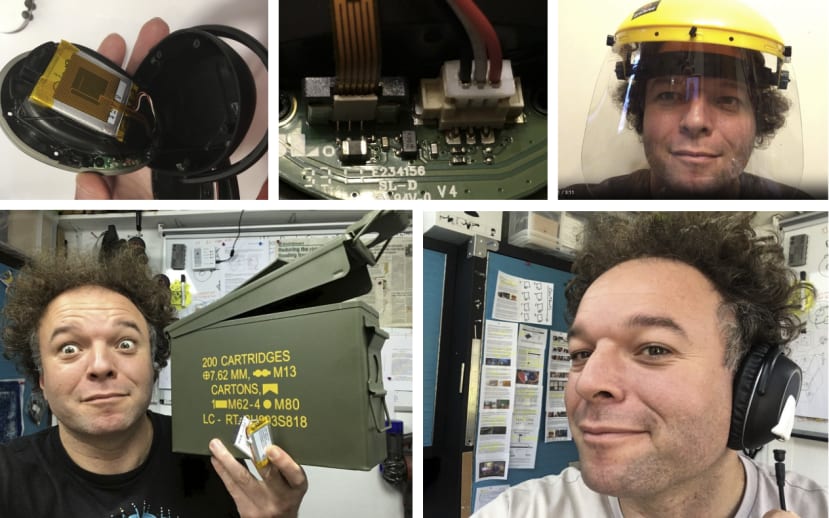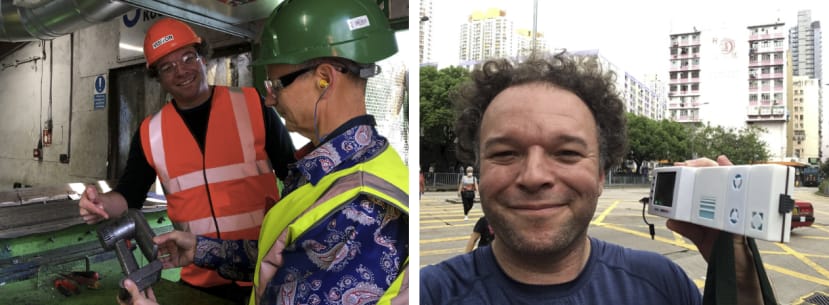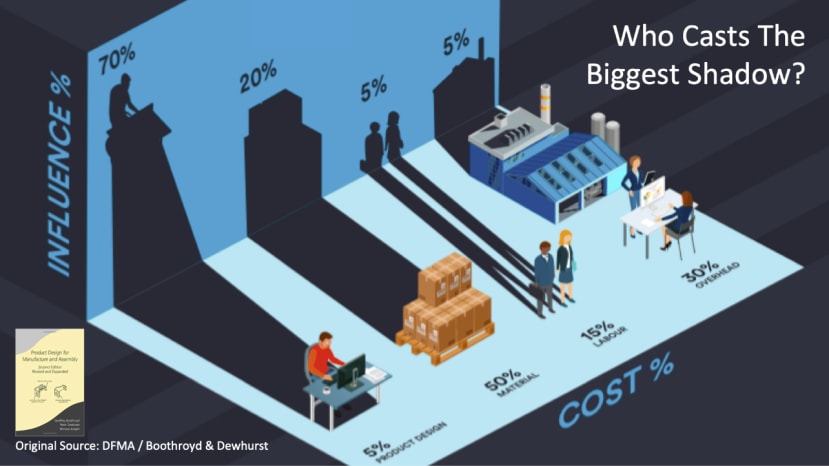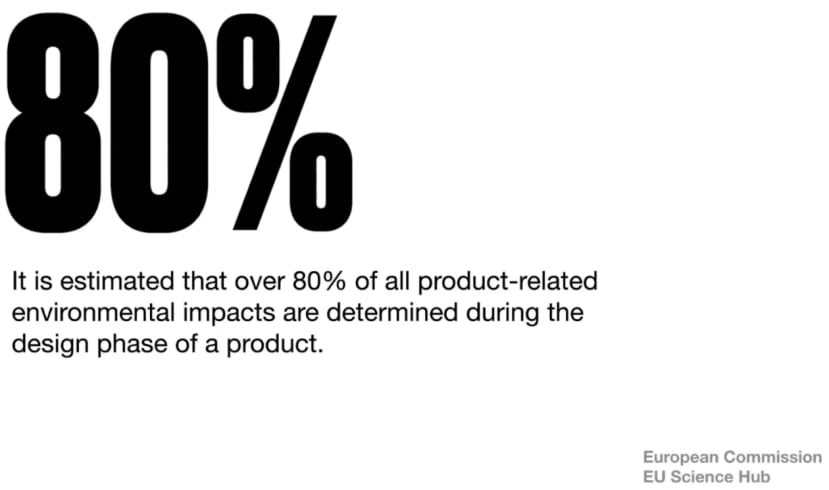The Fight to Repair - Introduction
Follow articleHow do you feel about this article? Help us to provide better content for you.
Thank you! Your feedback has been received.
There was a problem submitting your feedback, please try again later.
What do you think of this article?
I tried to repair my headphones and opened a Pandora's box! I went on to interview professionals as to why going green feels like an epic battle; from designers of products through to the consumers wanting to repair them.
As part of a series of articles, this one will focus on:
- Why it is so hard to replace Lithium Batteries in Portable Electronic Goods.
- Using my wireless headphones as a ‘vehicle’ to investigate the design, safety, legislative and consumer considerations that make this a multi-faceted problem to fix.
- Discussing the matter with industry pros - why going green feels like an epic battle, from designers of products through to the consumers wanting to repair them.
TL;DR: Designers can make many of their current designs more compliant, and with the right considerations - make for a better user experience, more sustainable, and potentially save money.
Introduction: My Fight to Repair my Sennheiser Noise Cancelling Headphones Battery.
A journey to replace a battery in my 6-year old headphones, which aside from poor battery life, work and sound fine. Although I have previously replaced the ear pads with ease for £20, the same cannot be said for the LiPo battery inside - hence dubbing this The Fight To Repair!
What started out as a refusal to simply send a £350 (RRP) set of otherwise top-performing headphones to landfill, turned out to be more complex than switching out with a ~£15 replacement battery, and expanded into a complex discussion on why this is so difficult in the first place, and what designers and engineers could learn from this when working on next generation products, both specific to battery replacement and beyond.

I ended up going down a rabbit hole of speaking to battery boffins, and electronic experts about everything from the commercial considerations to the consumer capability to perform a competent repair / replacement. I even ended up in Hong Kong - speaking with an expert in specialist electronic hardware design, as well as reconnecting with my alumni networks from Dyson to LEGO to try to understand some of the considerations a designer has to weigh up when designing a product to be user-serviceable, and getting some perspective on what this means for brands. As I went further into this, I naturally had more complex and nuanced questions, and had some wonderfully insightful chats with folks at The Restart Project, through to Fairphone, to understand why repairability is hard to design for.

I also grappled with the complexity of the imminent 2006/66/EC legislation which encourages companies to design products which are at least serviceable by a professional, and ideally by general consumers - to be in effect by 2026. Safe to say, it’s not as simple as just having the ‘right’ to repair - it has arguably become a ‘privilege to repair’ something, as the time and money it typically costs to repair have made buying new more tempting. To make a product easily repairable, the company has to absorb additional cost, whilst managing to engender enough ‘brand love’ in their respective consumers to pay for the inevitable extra cost of ‘going green/er’.
Above: Disassembling problematic products like ‘single use vapes’, through to inspiration from IKEA for hacking, some products that have worked on, and some I wish I had. All great discussion points and examples for better repairability of products.
On social media we may ‘like’ the virtuous ideals and planet promises, but behind closed doors - are we really convinced enough to support the greener brands, when (in all honesty) they sometimes fall a bit short of the tried and tested (but less green) established products deliver... and which are not just cheaper, but sometimes perhaps just that bit cooler, if we’re really being candid here? Going Green is tough if you don’t move in the right circles that validate it, where it serves you to take a stand against climate change.
The next 7 parts of this blog series, commissioned by DesignSpark, follow a mix of three themes:
- The ‘Vehicle’:
My journey trying to fix my headphones, and using it as an opportunity (excuse) to learn more / share why it’s not as easy as one would hope, as well as sharing some tips and tricks along the way. - The ‘Thought-Piece’:
More expansive and holistic exploration on the repairability, economics and the wider perspective around product design. - The ‘Wider Conversation’:
The above two points became a provocation for me to seek out experts or inspirational designers, engineers, strategists, policy writers/activists, and more besides.

Reasons to read these blogs:
- For Designers:
Who want to see how their actions affect the outcome of products, but who understandably know that not all decisions in a company / brand are within their immediate influence. I try to unpick the consideration and still give credible arguments for designers as they engage stakeholders and consumers to consider greener alternatives. Repairability is not just a ‘lifestyle’ choice, but often about better design. - For Electronic Engineers:
Who have been following some of the discussions around Batteries and WEEE legislation, and would like to know more about how this might impact their work in the near future. Similar to Designers - this blog series broaches some of the more contentious questions one might face in an organisation, and through discussions with experts, helps give some direction on how to make compelling arguments for change. - For Strategists, Marketeers, Sales, C-Suite:
Aside from the obvious, that the planet matters, the way forward is often a fraught and contradictory path: Consumers say one thing, and do another. Greenwashing is rife, and sometimes not always intentional. This series contains no ‘magic bullets’, but because many of the conversations are candid, and the scenarios are laid bare, for people in position of setting the ‘vision’ for a brand, or mandate for a team, this may provide some useful ‘what ifs’ that may help develop responses to a multitude of reactions to implementation of greater repairability. - For Consumers:
Although this blog series was written primarily for those creating products (physical, not apps), indeed, we are all consumers - and one of the many surprises of ‘going down this Rabbit Hole’ to fix my headphones, is that it nicely illustrates the choices in a tangible way. I genuinely believe you may change some of your perceptions around your purchasing decision, and perhaps this may be the start of something we will see more of. So be an early adopter, and an advocate for better design, and keeping your gear in play for longer!

Lastly, I hope you’ll join in on the debate on what needs to change in the Industry, Legislation and Consumer Awareness to allow products to not end up in landfill, but at the same time not just rely on ‘good intentions’ or optimistic thinking alone.
I thoroughly enjoyed this assignment, and welcome any feedback on the somewhat unorthodox approach of ‘Journalism by Excursion’, or to put it another way - ‘getting paid to go down the Rabbit Hole, so you don’t have to!’. Either way, many thanks to DesignSpark for the generous commission and leap of faith to delve into a complex issue of repairability in electronic portable products.
Contents:
Prologue:
Pre-Departure Notice - How an Attempt to Repair my Headphones Turned into a 3-Month Journey with a Grand Finale at the Recycling Centre.
Main Articles:
Intro - The Fight to Repair with Jude Pullen, for RS DesignSpark.
Part 1 - LiPo Battery Basics, Headless Laptops & Safety First.
Part 2 - Returning to Hong Kong, My Design Conspiracy Theories and Meeting Dr Lawrence.
Part 3 - Falling in Love With The Problem of R2R, Looria, and Pre-Purchase Reparability Considerations.
Part 4 - Ken Pillonel’s Ingenious iPhone Hack, and Repairability as a Disruptor.
Part 5 - Battery Post-Mortems with Andy Sinclair, Vapes, Dogmatism and Hacking My Headphones.
Part 6 - Legislation Loopholes, Eco Black Mirror, Chunky Fashion, and R2R Business Models and The Case for Standardisation.
Part 7 - Design, Engineering & Electronics Recommendations for R2R.
Encore:
Part 8 - Visit to End of Life Processing Plant - SWEEEP Kuusakoski Ltd
Part 9 - Interviews with Industry Experts on Right to Repair.
Contact: If you have any other questions, or would like to collaborate, please get in touch (link).
Disclaimer: This series has been created for discussion purposes and is not a 'how to' guide. Jude Pullen is a chartered engineering professional, and has sought additional expert advice alongside his endeavours to explore this subject safely. For additional information please see DS Terms of Use.




Comments